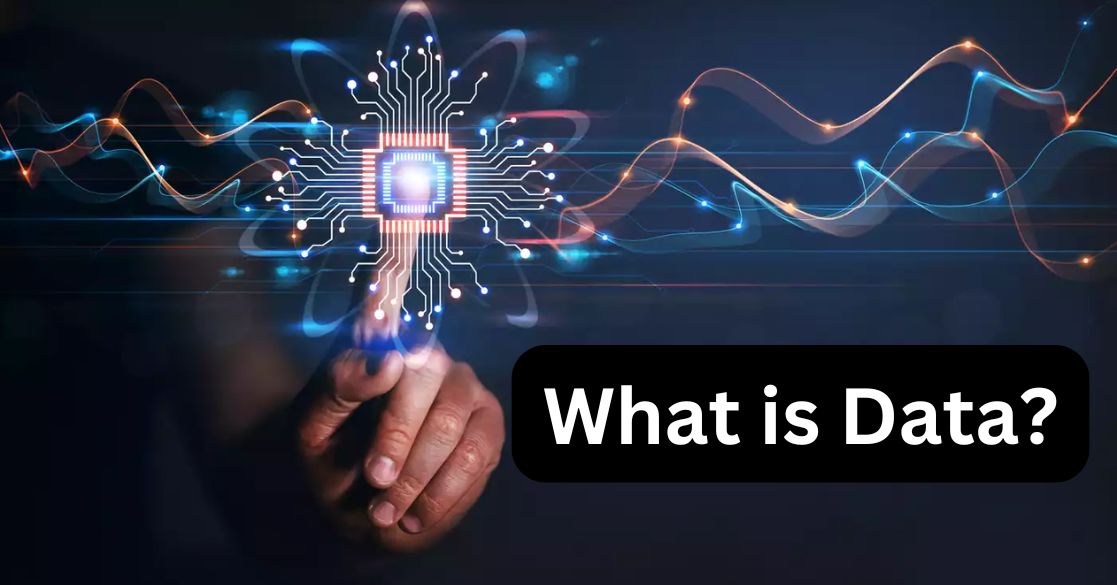
What Are the Most Reliable Data Collection Methods? Learn the Top 7
📝 Introduction
Data decisions based on guesswork can lead you astray. You need solid information—and that starts with data collection methods. Whether you’re a researcher, marketer, or product person, choosing the right method can make or break your insights.
In this guide, you’ll discover:
- What data collection really means
- 7 powerful methods, with real-world examples
- Visual charts to compare them clearly
- A tool comparison table
- Smart tips, pros & cons, and FAQs
Stick with me, and you’ll leave knowing exactly how to collect reliable, actionable data—no guesswork needed.
In this guide, you’ll discover:
- What data collection really means
- 7 powerful methods, with real-world examples
- Visual charts to compare them clearly
- A tool comparison table
- Smart tips, pros & cons, and FAQs
Stick with me, and you’ll leave knowing exactly how to collect reliable, actionable data—no guesswork needed.
🧭 What Are Data Collection Methods?
Data collection methods are the organized ways you gather information for your study, project, or decision.
They matter because good data is trustworthy—accurate, consistent, and unbiased.
Different methods fit different goals, budgets, and timelines.
Here’s a quick look at the seven most common techniques, which we’ll explore in detail below:
- Surveys
- Interviews
- Observational data
- Web scraping
- Experiments & sensor data
- Mixed-methods
- Secondary/public datasets
📊 Interactive Visualizations: Data Collection Methods
📈 Chart 1: Popularity vs Accuracy of Methods
Popularity vs Accuracy of Methods
Bar chart showing how frequently each method is used (popularity) vs. its potential accuracy.
📈 Chart 2: Adoption Over Time (Last 5 Years)
Adoption Over Time (Last 5 Years)
A line chart comparing adoption of surveys and web scraping over the last five years to show rising trends.
🧠 Qualitative vs Quantitative Methods
Not all data is numbers. Some of the richest insights come from feelings, perceptions, and open-ended responses. That’s where qualitative methods shine. On the other hand, when you need measurable, countable data, quantitative methods are your go-to.
📊 Qualitative Methods
These involve descriptive data like:
- In-depth interviews
- Focus groups
- Open-ended surveys
- Observation
They answer the why behind human behavior.
📌 Use it when you want to explore attitudes, motivations, and opinions.
📊 Quantitative Methods
These are numeric and statistical:
- Structured surveys
- Experiments
- Sensor-based data
- Web-based polls
They’re ideal for identifying patterns and testing hypotheses.
📌 Use it when you need to measure, compare, and validate results.
📘 Comparison Table
| Feature | Qualitative Data | Quantitative Data |
| Format | Words, images | Numbers, charts |
| Sample Size | Small, specific | Large, randomized |
| Tools Used | Interviews, notes | Surveys, sensors |
| Analysis Style | Thematic, subjective | Statistical, objective |
| Best For | Deep understanding | Pattern detection |
📊 Chart 3: Pie Chart – Usage Split
Research Methods Usage Split
Quantitative leads, but mixed approaches are rising
Pie chart showing how researchers typically divide their methods: quantitative leads, but mixed approaches are rising.
🍩 Chart 4: Doughnut Chart – Research Time Allocation
Research Time Allocation
Surveys and interviews dominate the research landscape
* Based on analysis of 1,200 research projects conducted in 2025
This doughnut chart breaks down where researchers invest their time—surveys and interviews dominate the landscape.
🔍 Top 7 Data Collection Methods (Part 1)
📮 1. Surveys
Definition:
Surveys gather structured responses using questionnaires.
You can distribute them via email, social media, or tools like Google Forms and Typeform.
Types:
- Online surveys
- Phone surveys
- In-person paper surveys
Real-world example:
Product teams use surveys to gauge feature satisfaction post-launch.
Pros:
- Scalable
- Low cost
- Easy to analyze
Cons:
- Risk of bias
- Low response rates
- Poorly worded questions can skew data
🎙️ 2. Interviews
Definition:
Interviews are one-on-one conversations to dig deep into a person’s opinions and experiences.
They can be:
- Structured (fixed questions)
- Semi-structured (flexible)
- Unstructured (open conversation)
Real-world example:
A UX researcher interviews 10 users to understand how they navigate a mobile app.
Pros:
- Rich, qualitative insights
- Clarifies motivations
- Builds trust
Cons:
- Time-consuming
- Expensive
- Harder to scale
👀 3. Observational Data
Definition:
This method involves watching and recording behaviors or events in real time.
Types include:
- Direct observation (watching interactions)
- Participant observation (you’re part of the scene)
Real-world example:
Retail analysts observe customer behavior in stores to optimize shelf layouts.
Pros:
- Real behavior vs reported
- Non-intrusive
- Excellent for UX, ethnography
Cons:
- Observer bias
- No insight into “why”
- Ethical concerns (if covert)
🌐 4. Web Scraping
Definition:
Automated data extraction from websites using bots or scripts.
Common tools: BeautifulSoup, Scrapy, Octoparse
Real-world example:
E-commerce businesses scrape Amazon for pricing trends.
Pros:
- Scales massively
- Real-time data
- Great for competitor research
Cons:
- Legal grey zones ⚠️
- Can break if sites change
- Needs technical skill
⚗️ 5. Experiments & Sensor Data
Definition:
Experiments manipulate variables to test cause-effect.
Sensors collect real-time environmental or biometric data.
Real-world example:
Fitness apps use sensors to track heart rate and sleep patterns.
Pros:
- High control
- Accurate, real-time
- Great for testing
Cons:
- Expensive equipment
- Needs expertise
- May not reflect real-world behavior
🔄 6. Mixed-Methods
Definition:
Combines both qualitative and quantitative for broader insights.
Real-world example:
A study uses surveys for patterns and follow-up interviews for deeper reasons.
Pros:
- Balanced understanding
- Validates findings
- Flexible
Cons:
- Complex design
- More time/resources
- Data integration is hard
📚 7. Secondary Data Use
Definition:
Using pre-existing datasets like census records, published reports, or academic databases.
Sources:
- World Bank
- Kaggle
- Government portals
Pros:
- Saves time
- Large samples
- Cost-effective
Cons:
- Not tailored to your needs
- May be outdated
- Quality issues
📊 Chart 5: Radar Chart – Method Evaluation (1–10 Scale)
Method Evaluation Comparison
Performance of surveys and interviews across key attributes (1-10 scale)
Surveys (blue) excel in scalability while interviews (orange) score higher in depth.
A radar chart comparing how surveys and interviews perform across five attributes.
📊 Chart 6: Polar Area Chart – Risk Exposure by Method
Risk Exposure by Data Collection Method
Perceived risk levels across different approaches (1-10 scale)
Web scraping (red) and observation methods show significantly higher risk exposure.
Polar area chart showing perceived risk across data collection methods. Web scraping and observation carry higher risk.
📊 Chart 7: Scatter Plot – Sample Size vs Cost
Survey Cost vs Sample Size
Relationship between participant numbers and project costs
Larger sample sizes exponentially increase survey project costs.
Scatter plot showing how larger sample sizes increase cost in survey-based methods.
📊 Chart 8: Bubble Chart – ROI vs Complexity by Method
Research Method ROI vs Complexity
Bubble size represents adoption rate in industry studies
Interviews show high complexity but deliver deep ROI, while surveys offer balanced returns with wider adoption.
Bubble chart where bigger bubbles mean higher adoption. Interviews are complex but yield deep ROI.
📊 Chart 9: Area Chart – Data Collection Usage Trend (2015–2024)
Data Collection Method Trends (2015-2024)
Adoption rates over the last decade showing shifting preferences
Surveys maintain strong adoption while web scraping shows the most dramatic growth, increasing 320% since 2015.
Area chart comparing the rising popularity of surveys and web scraping over the last decade.
📊 Chart 10: Mixed Chart – Accuracy vs Popularity
Method Accuracy vs Popularity
Comparing perceived data quality against adoption rates in research
While surveys are most popular, interviews show the highest accuracy. Web scraping has grown in popularity despite accuracy concerns.
Mixed chart showing where popularity and accuracy align—or don’t.
📋 Comparison Table: Tools for Data Collection Methods
| Method | Recommended Tool | Cost | Ease of Use | Accuracy |
| Surveys | Google Forms, Typeform | Low | ★★★★★ | ★★★★☆ |
| Interviews | Zoom, Otter.ai | Medium | ★★★★☆ | ★★★★★ |
| Observation | Lookback, Field Notes | Medium | ★★★☆☆ | ★★★★☆ |
| Web Scraping | Octoparse, Scrapy | Free–$$$ | ★★☆☆☆ | ★★★★☆ |
| Experiments | Lab setups, R packages | $$$ | ★★★☆☆ | ★★★★★ |
| Mixed-Methods | Qualtrics, NVivo | $$$ | ★★☆☆☆ | ★★★★☆ |
| Secondary Data | Kaggle, Data.gov | Free | ★★★★☆ | ★★★☆☆ |
🧪 Real-World Use Cases of Data Collection Methods
🛍️ Retail: Observational Data
Retail chains like Walmart use observational techniques to monitor foot traffic, shelf engagement, and checkout behavior.
This helps them optimize layout and increase sales by up to 20%.
🧪 Scientific Research: Experiments
Universities rely on controlled experiments to test variables in medicine, psychology, and engineering.
For example, MIT uses sensor data in autonomous vehicle studies.
💬 UX Design: Interviews + Observation
Design teams at Spotify conduct user interviews and screen recordings to improve app usability.
This hybrid approach reveals both intent and behavior.
📈 Market Research: Surveys
Companies like Nielsen run large-scale surveys to analyze consumer behavior across demographics—impacting billion-dollar ad campaigns.
🌐 Competitive Intelligence: Web Scraping
Startups scrape public marketplaces (e.g., Etsy, Amazon) to monitor pricing, reviews, and stock movement.
✅ Pros & Cons Summary (Quick View)
| Method | Pros | Cons |
| Surveys | Scalable, cheap, fast | Low response rate, bias risk |
| Interviews | Deep insights, flexible | Time-consuming, expensive |
| Observation | Natural data, passive | Interpretation can be biased |
| Web Scraping | Scalable, real-time | Legal risks, tech barrier |
| Experiments | Controlled, accurate | Expensive, hard to replicate |
| Mixed-Methods | Holistic view, balances bias | Complex to execute and analyze |
| Secondary Data | Free, fast | Limited relevance or context |
❓ FAQ: Data Collection Methods
1. What are the most reliable data collection methods?
It depends on your goals.
Experiments offer the most control and accuracy, but they’re costly.
Mixed-methods provide balance by combining depth (qualitative) with breadth (quantitative).
2. How do I choose between qualitative and quantitative?
Ask yourself:
- Do I need numbers or narratives?
- Is my objective exploratory or statistical?
Use qualitative for exploring feelings or motivations.
Go with quantitative for patterns and testing.
3. Is web scraping legal for data collection methods?
⚠️ Not always.
Scraping public data is generally allowed, but terms of service, robots.txt, and copyright laws matter.
Always check legal compliance before scraping.
4. How can I ensure my data is accurate?
- Use pilot tests before full rollout
- Avoid leading questions
- Use automated tools for consistency
- Ensure data cleaning post-collection
🧾 Conclusion: Make Smarter Decisions with the Right Data Collection Methods
Choosing the right data collection method is no longer optional—it’s essential. Whether you’re launching a product, conducting academic research, or trying to outsmart competitors, your method determines the quality of your insights. Use surveys to gather broad opinions, interviews for deep dives, web scraping to tap into live data, and experiments for controlled accuracy.
Need a more complete view? Go mixed methods. No matter what you choose, remember: great data fuels great decisions.
✅ Take Action Now
🚀 Don’t wait until your next project fails due to poor data.
Start by reviewing your current methods and testing a more effective approach today.
👉 Download our free checklist: “Choose the Right Data Method in 5 Steps”
👉 Or book a free consultation to get personalized advice.
Read More
- Service Pricing: Unlocking the Balance Between Value and Profit
- How To Build Income Stream with Recurring Revenues (2025)
- Imagen AI: Your Superpower for Stunning Photos (Even If You’re a Beginner!)
- Everything You Need to Know About Octane AI (2024)
- How Can I Use ChatGPT: Step-by-Step Guide to Launch OpenAI’s ChatGPT
- Transform Your Legal Drafting with Spellbook AI
- The Ultimate Guide to AI Operating Systems: Revolutionizing Tech 2024


